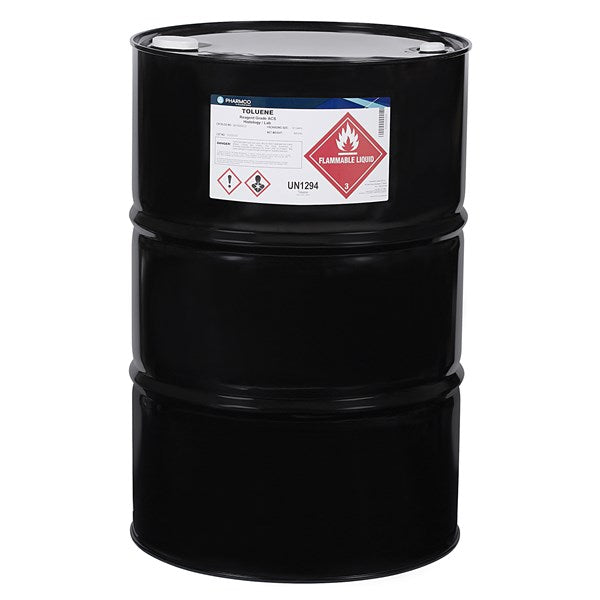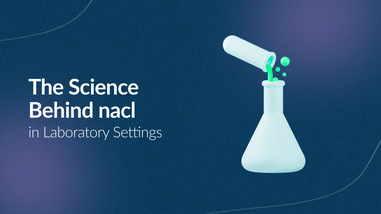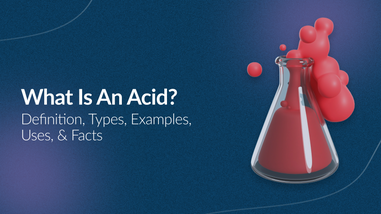- No products in the cart.
In the realm of laboratory solvents, few substances hold as much importance and versatility as toluene. With its unique chemical properties and a wide array of applications, toluene has become a staple in laboratories across various scientific disciplines. However, its power comes with responsibilities, as its handling demands stringent safety precautions to ensure a secure working environment. In this blog, we will delve into the properties, applications, and safety measures associated with toluene in the laboratory setting.
Understanding Toluene: Properties and Versatility
Toluene, also known as methylbenzene, is a colorless, sweet-smelling liquid with the chemical formula C₆H₅CH₃. Its remarkable properties make it a versatile solvent in laboratories. One of its most notable characteristics is its ability to dissolve a wide range of organic compounds, making it an essential tool for researchers across multiple fields.
Toluene's relatively low boiling point of 110.6 °C (231.1 °F) and high volatility contribute to its effectiveness as a solvent. It can easily evaporate at room temperature, leaving behind a concentrated solution of the dissolved substances. This property is particularly valuable in applications where residue removal is crucial, such as in the synthesis and purification of chemicals.
Properties
| Synonyms | n/a |
| Grade | ACS |
| Assay | NLT 99.5% |
| Form | Liquid |
| Density | 0.785 g/mL at 25 °C (lit.) |
| Flash Point | 39.2 °F |
| Boiling Point | 231.8 °F |
| Vapor pressure | 29.1 hPa at 20 °C (68 °F) |
| Apperance | Clear, Colorless liquid |
| Color (APHA) | 10 max |
| Residue after Evaporation | 0.001% max |
| Water | 0.03% max |
Applications in the Laboratory
Toluene finds itself in a plethora of laboratory techniques and applications due to its solvent capabilities:
-
Chemical Synthesis: Toluene serves as a crucial medium for chemical reactions, allowing researchers to dissolve and react reagents effectively. It's commonly used in the synthesis of organic compounds and pharmaceuticals.
-
Chromatography: Toluene is frequently employed as a mobile phase component in gas chromatography due to its volatility. It helps separate and analyze complex mixtures of compounds.
-
Nuclear Magnetic Resonance (NMR) Spectroscopy: Toluene can act as a reference standard in NMR experiments, providing a chemical shift reference point for proton NMR spectra.
-
Paints and Coatings: Toluene's ability to dissolve various resins and pigments makes it a valuable ingredient in the formulation of paints, coatings, and adhesives.
-
Energy Research: Toluene is used as a fuel in internal combustion engines for research purposes, particularly in studying engine performance and emissions.

Safety Precautions: Handling Toluene Safely in the Laboratory
While toluene's applications are undeniably valuable, its handling demands meticulous attention to safety protocols. Here are essential safety precautions to consider when working with toluene in the laboratory:
-
Ventilation is Key: Toluene vapors can be harmful if inhaled, causing dizziness, headaches, and even more severe health effects with prolonged exposure. Always work in a well-ventilated area, preferably under a fume hood, to minimize vapor inhalation.
-
Personal Protective Equipment (PPE): Wear appropriate PPE, including lab coats, gloves, safety goggles, and respiratory protection if necessary. Gloves should be resistant to organic solvents to prevent skin contact.
-
No Open Flames: Toluene is highly flammable, and its vapors can form explosive mixtures with air. Avoid open flames, sparks, or any potential sources of ignition in the vicinity.
-
Proper Storage: Store toluene away from direct sunlight and heat sources in a cool, well-ventilated area. Keep containers tightly sealed to prevent vapor release.
-
Avoid Skin Contact: In case of skin contact, promptly wash the affected area with soap and water. If toluene comes into contact with your skin, remove contaminated clothing and rinse thoroughly.
-
Emergency Measures: Familiarize yourself with emergency procedures and the location of safety equipment, such as eyewash stations, safety showers, and fire extinguishers.
Best Practices for a Secure Working Environment
Creating a secure working environment when dealing with toluene involves a combination of adherence to safety guidelines and cultivating a culture of responsibility. Here are some best practices to ensure the well-being of laboratory personnel:
-
Training and Education: Properly train all laboratory personnel on the properties of toluene, its potential hazards, and the correct handling procedures. Regular safety workshops and refresher courses can reinforce safe practices.
-
Labeling and Documentation: Clearly label all toluene containers with relevant hazard information. Maintain accurate records of toluene usage, storage, and disposal to track potential exposure.
-
Regular Inspections: Conduct routine inspections of storage areas, ventilation systems, and safety equipment. Address any issues promptly to prevent accidents or exposure.
-
Emergency Response Plans: Develop and communicate comprehensive emergency response plans for toluene-related incidents. Ensure that all personnel are aware of the protocols to follow in case of a spill, leak, or exposure.
-
Collaboration and Communication: Foster a culture of open communication among laboratory members. Encourage reporting of potential hazards or safety concerns and facilitate a collaborative approach to problem-solving.
In conclusion, toluene's remarkable solvent properties have earned it a prominent role in laboratory applications ranging from chemical synthesis to chromatography. However, its power comes with inherent risks that demand strict adherence to safety precautions. By following established guidelines, wearing appropriate PPE, and promoting a safety-conscious atmosphere, laboratories can harness the potential of toluene while minimizing the associated hazards. Remember, a secure working environment is the cornerstone of productive and responsible scientific research.
For over 40 years, Lab Pro Inc. has been committed to delivering highest quality lab chemicals, lab supplies, hand tools, lab equipment, reagents, distance learning kits, and cleanroom PPE apparel. Renowned by global medical device companies and laboratories, we ensure exceptional quality in every product. Contact us online or call 888-452-2776 to learn more. Discover top-notch lab supplies and elevate your experiments today!












































